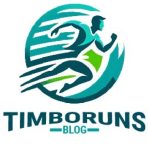Recovery is an aspect of running that often doesn’t get as much limelight as speed sessions or long runs, yet it’s crucial to the success and longevity of any runner’s journey. The way you recover can significantly affect your performance, dictate your risk of injury, and influence your overall health and well-being. Whether you’re sprinting through city streets, tackling rugged trails, or simply enjoying a leisurely jog in the park, understanding and implementing effective recovery techniques is key to keeping your legs moving and your spirit soaring. Today, I’ll share five essential recovery methods that will help you bounce back stronger after each run.
Stretching Routines
Overview: Stretching plays a pivotal role in any runner’s recovery process. It aids in reducing muscle tightness and increasing flexibility, which can lead to improved performance and decreased risk of injury.
Types of Stretches: Before diving into your run, dynamic stretches are your best friend. They prepare your muscles for the work ahead, enhancing your range of motion. Think leg swings, lunges, and arm circles. Post-run, focus on static stretches to cool down. Gently stretch your hamstrings, quadriceps, calves, and glutes, holding each stretch for about 30 seconds to allow your muscles to relax and lengthen.
Example Routine: After a run, start with a calf stretch, move on to a seated hamstring stretch, then a quadriceps stretch standing or lying down, followed by a glute stretch on your back. This routine targets the major muscle groups used in running, aiding in their recovery.
Hydration Strategies
The Role of Hydration: Hydration is crucial for muscle function and recovery. Proper fluid intake helps to flush out toxins, transport nutrients to your cells, and prevent muscle cramps and fatigue.
Post-Run Hydration Tips: After a run, aim to replenish the fluids you’ve lost through sweat. An easy way to gauge how much to drink is by weighing yourself before and after your run and drinking 500-700 ml of water for every half kilogram lost. Don’t forget electrolytes, especially after long runs or in hot weather, to restore the balance of minerals in your body.
Signs of Dehydration: Look out for symptoms such as thirst, dry mouth, fatigue, decreased urine output, and darker urine. These signs indicate it’s time to hydrate!
Nutrition Tips for Muscle Repair
Nutritional Needs: Your muscles need protein for repair and carbohydrates to replenish glycogen stores. Aiming for a snack or meal that includes both macronutrients within 30 minutes to an hour post-run can significantly aid in your recovery.
Post-Run Meal Ideas: A smoothie with protein powder, banana, and a handful of spinach; a chicken and avocado wrap; or a bowl of quinoa with mixed vegetables and lean beef are all great options. These meals offer a balance of protein, carbs, and fats to support muscle repair and energy replenishment.
Supplements: While whole foods should always be your first choice, supplements like whey protein can be beneficial, especially when you’re short on time. Omega-3 fatty acids and vitamin D3 can also support recovery, but it’s best to consult with a healthcare professional before starting any new supplement regimen.
Rest Days and Sleep
Rest Days: Integrating rest days into your training plan is essential. They allow your body to recover, adapt, and strengthen. This doesn’t mean you have to stay completely inactive; gentle, restorative activities like walking or yoga can be beneficial.
The Role of Sleep in Recovery: Sleep is when your body does most of its repair work. Growth hormone, which is vital for muscle repair, is released in higher quantities during deep sleep. Aim for 7-9 hours per night to give your body enough time to recover fully.
Tips for Better Sleep: Establish a calming pre-sleep routine, keep electronic devices out of the bedroom, and try to go to bed and wake up at the same time every day to regulate your body’s internal clock.
Active Recovery vs. Complete Rest
Defining Active Recovery: Active recovery involves low-intensity exercise that promotes blood flow to the muscles without causing strain. It can help alleviate muscle stiffness and improve mobility.
When to Choose Active Recovery: Opt for active recovery after particularly intense workouts or races when you feel that moving might be more beneficial than complete rest. Activities like swimming, cycling at a low intensity, or a gentle jog can be perfect.
Active Recovery Activities: Besides the ones mentioned, consider Pilates or a casual walk in nature. The key is to keep the intensity low enough that you’re aiding recovery, not hindering it.
Recovery is not just a single action but a collection of habits that together can significantly enhance your running performance and overall quality of life. By incorporating stretching, staying hydrated, eating nutritiously, getting enough rest, and wisely choosing between active recovery and complete rest, you’ll be setting yourself up for success in your running endeavors.
Now, I’d love to hear from you! What are your go-to recovery techniques? Share your tips and experiences in the comments below, and don’t forget to follow @timbo.runs on Instagram for more insights and updates. Happy running, and even happier recovering!
